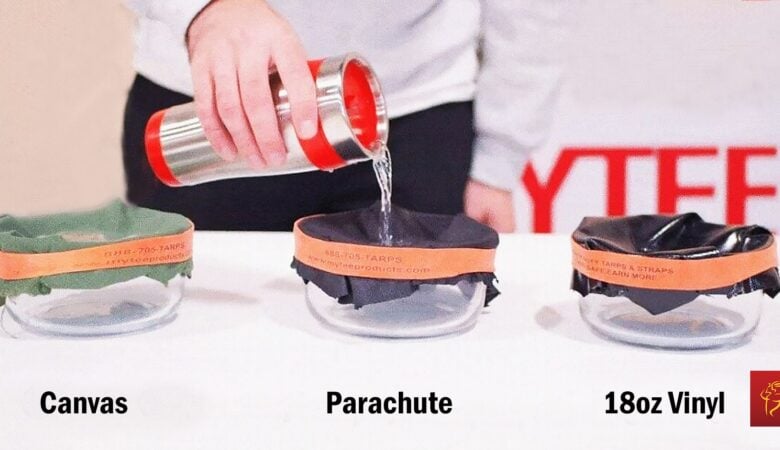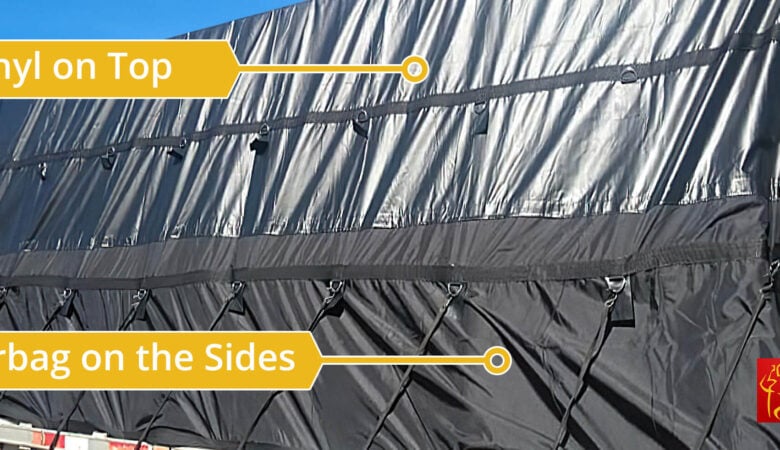Flatbed truck tarps are one of the most important tools a flatbed trucker can own. However, the tarps in the trucker’s toolbox are more than just randomly manufactured pieces of fabric in different colors. There is actually a science behind their design, science you may not be aware of. Flatbed truck tarps are designed in such a way, as to provide maximum cargo protection in a package that is affordable and relatively easy to use.
The science behind flatbed truck tarps begins with the shape. Obviously, steel tarps are long and rectangular where machinery tarps tend to be squares or smaller rectangles. Lumber tarps combine long rectangles with additional flaps that come down over the sides of the trailer.
Rectangles Are Extremely Flexible
Rectangles are the preferred shape for flatbed truck tarps because the rectangle offers maximum flexibility. A rectangle allows significant coverage for loads of all kinds, but with a narrow profile that makes it easy to handle across the back of a flatbed or a dump truck box. You can still get very good coverage with a square, but squares need to be bigger to cover the same area. This makes them less flexible and harder to work with. It is for this reason that square tarps are usually reserved for covering machinery or acting as smoke protection. Rectangles are still the preferred shape for most flatbed loads.
Flat vs. Shaped Tarps
Campers and hikers are known to prefer shaped tarps because their catenary cuts and curves provide durability and strength, especially along seams. A good shaped tarp has a very strong spine that makes it ideal as a shelter or hammock. Nevertheless, shaped tarps do not work well for most flatbed applications.
A shaped tarp is limited in coverage by the shape it takes. On the other hand, a flat tarp has no such limits. It works equally well whether the truck driver is covering a set of steel coils or a load of construction materials. The tarp will conform to whatever shape it is applied to with maximum protection at all times. Not so with the shaped tarp. That is why you don’t see shaped tarps used by truckers except in very rare and specialized circumstances.
Material Choices Equally Important
The science behind flatbed truck tarps even covers the materials manufacturers choose to use. For example, all of the tarps we carry at Mytee Products are made with heavy-duty vinyl or canvas manufactured as a woven product. It is the weaving that gives the materials their incredible strength.
A woven vinyl material is as strong as any other commercial or industrial fabric yet still lightweight enough to be easy to handle. Woven canvas is somewhat heavier, but it offers the added benefit of breathability for applications where moisture is a concern. In either case, the fabrics are woven according to detailed specifications that make them ideal for tarp manufacturing.
Grommets and D-rings
Lastly, grommets and D-rings are built into flatbed truck tarps to make securing them to trailers as easy as possible. Nonetheless, neither grommets nor D-rings are placed randomly. Grommets are sewn into the outside edges at specific intervals that offer the maximum number of securement options without sacrificing material integrity. The same is true with D-rings. Designers also place extra D-rings on specific kinds of tarps that make covering loads easier. The D-rings found on your average lumber tarp are a good example.
Tarp design is anything but haphazard. There is a lot of important science behind flatbed truck tarps that make them the perfect tools for their intended purposes.










